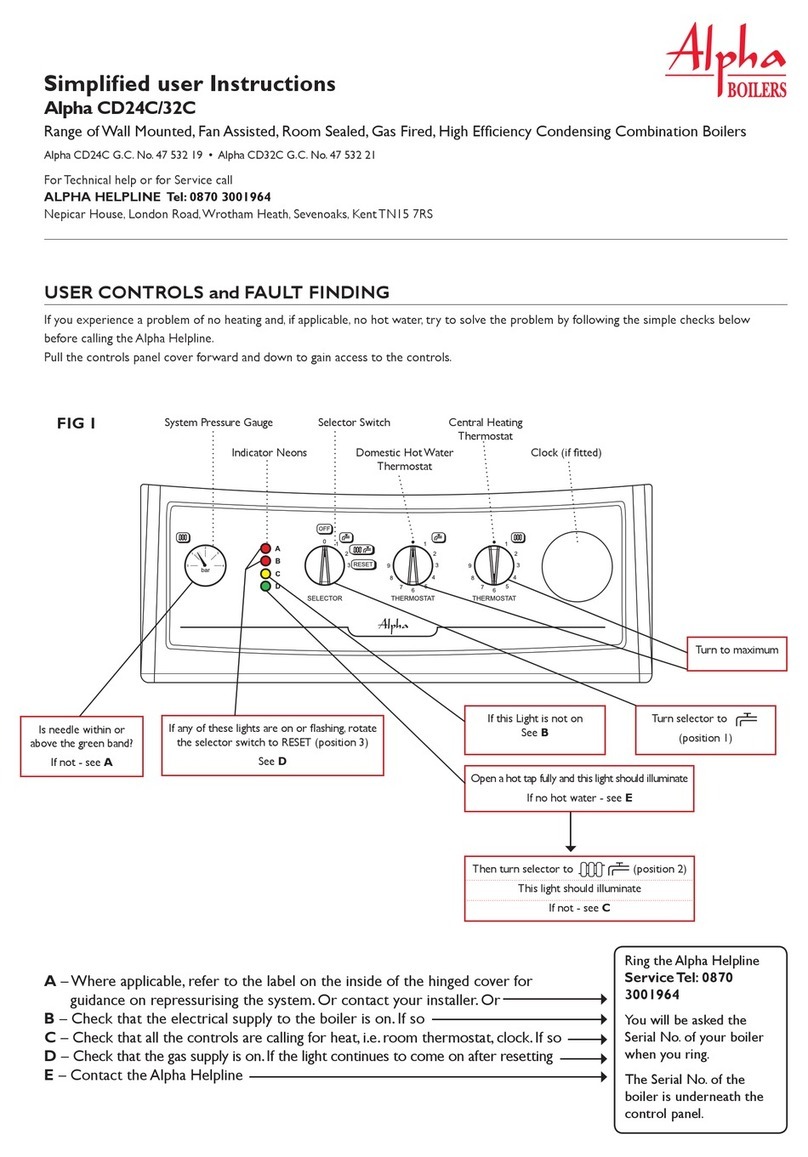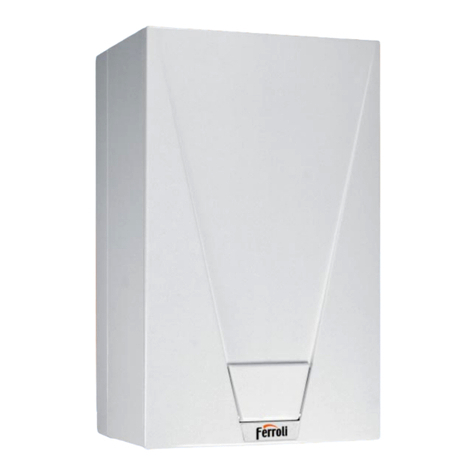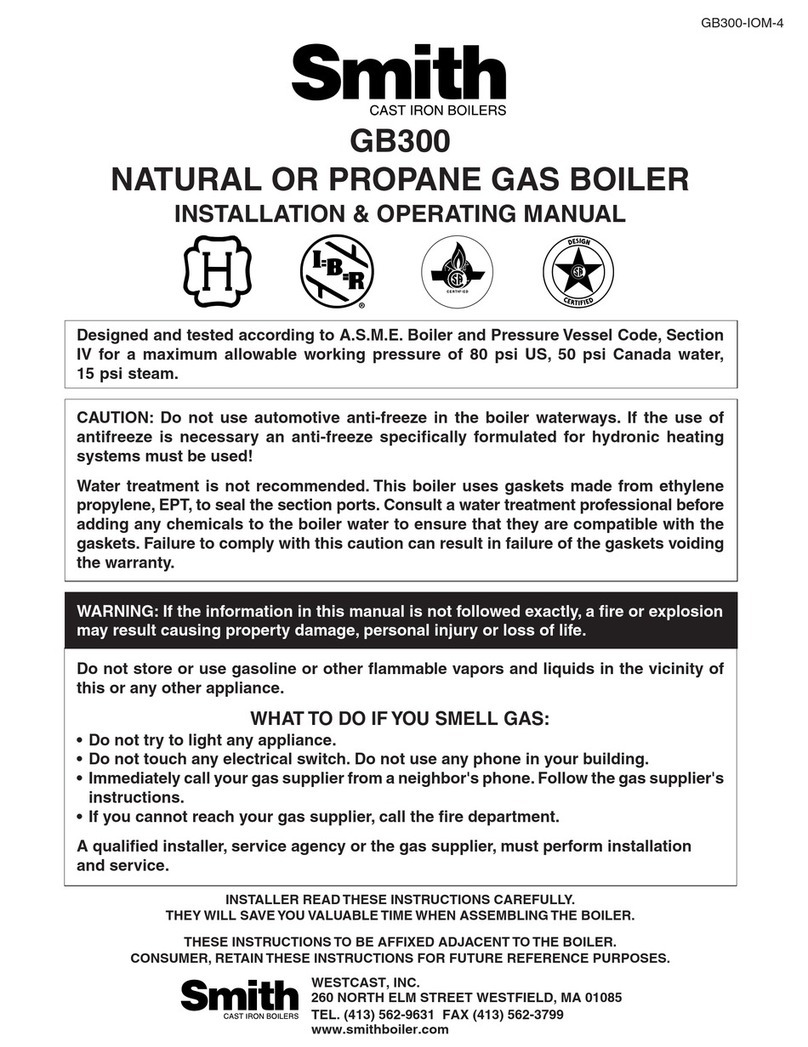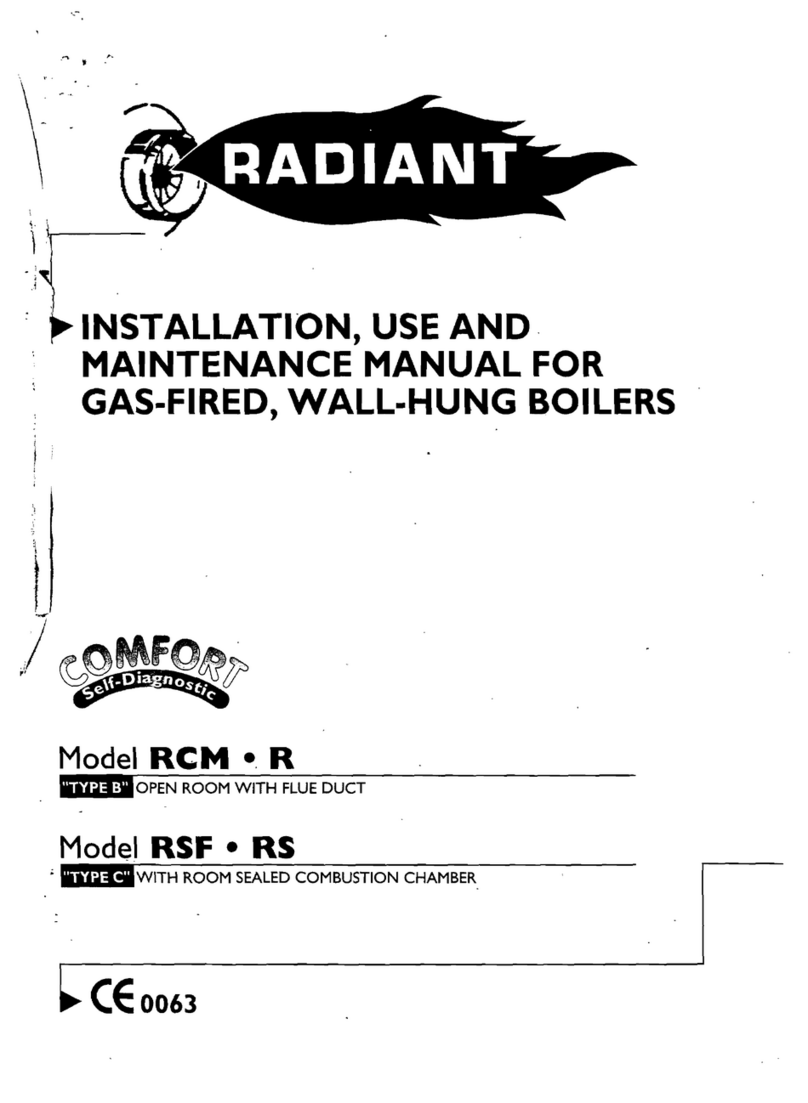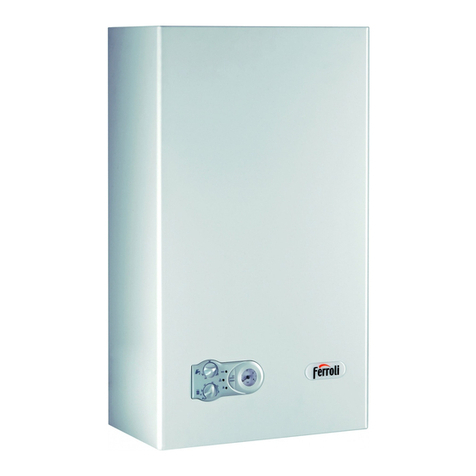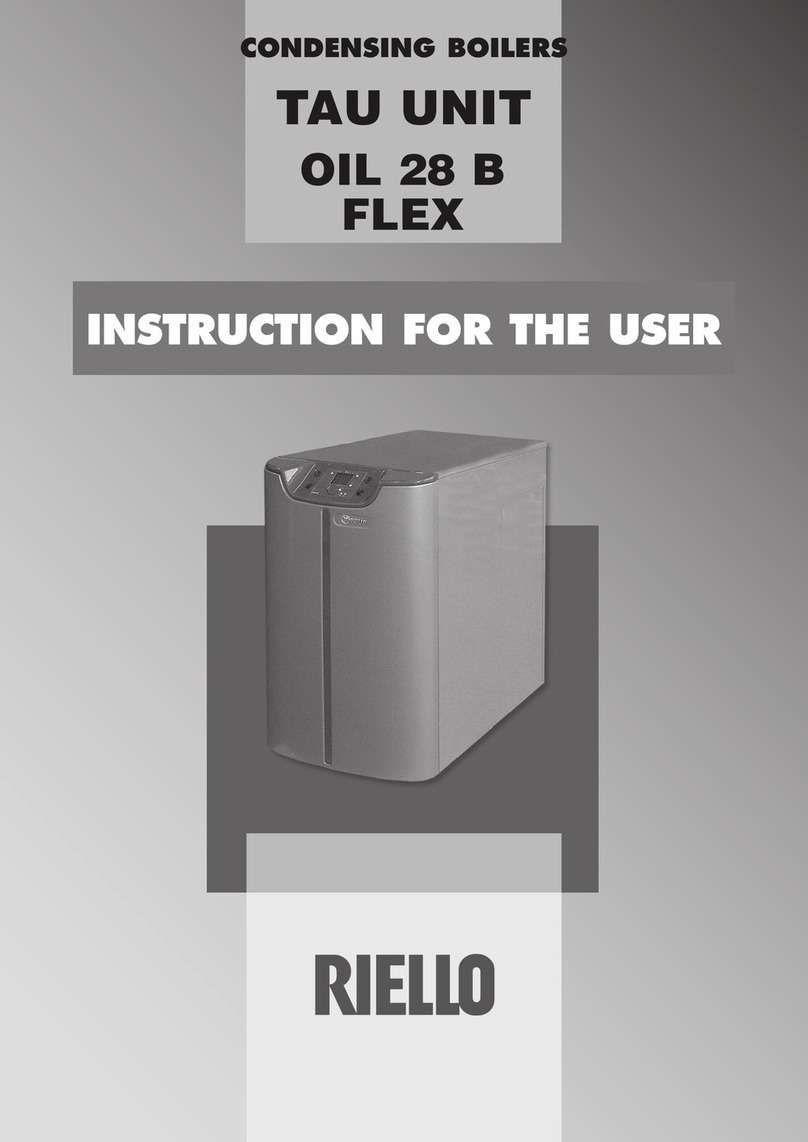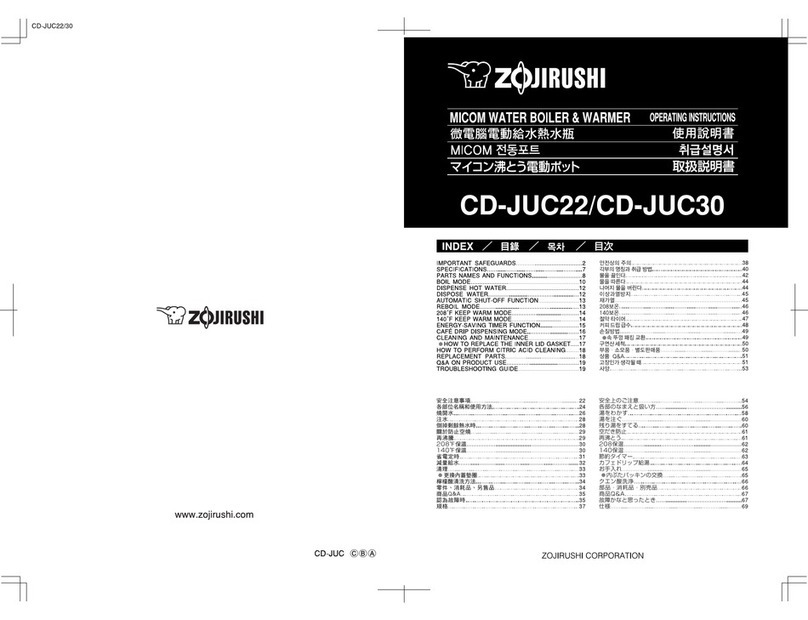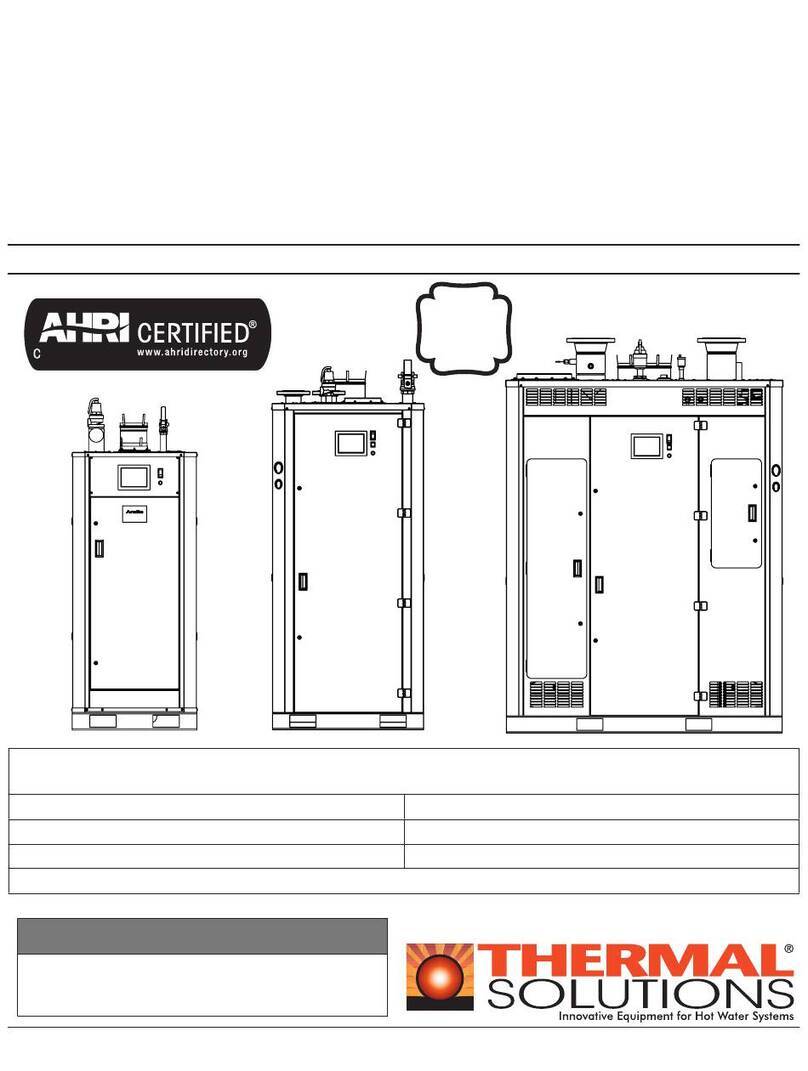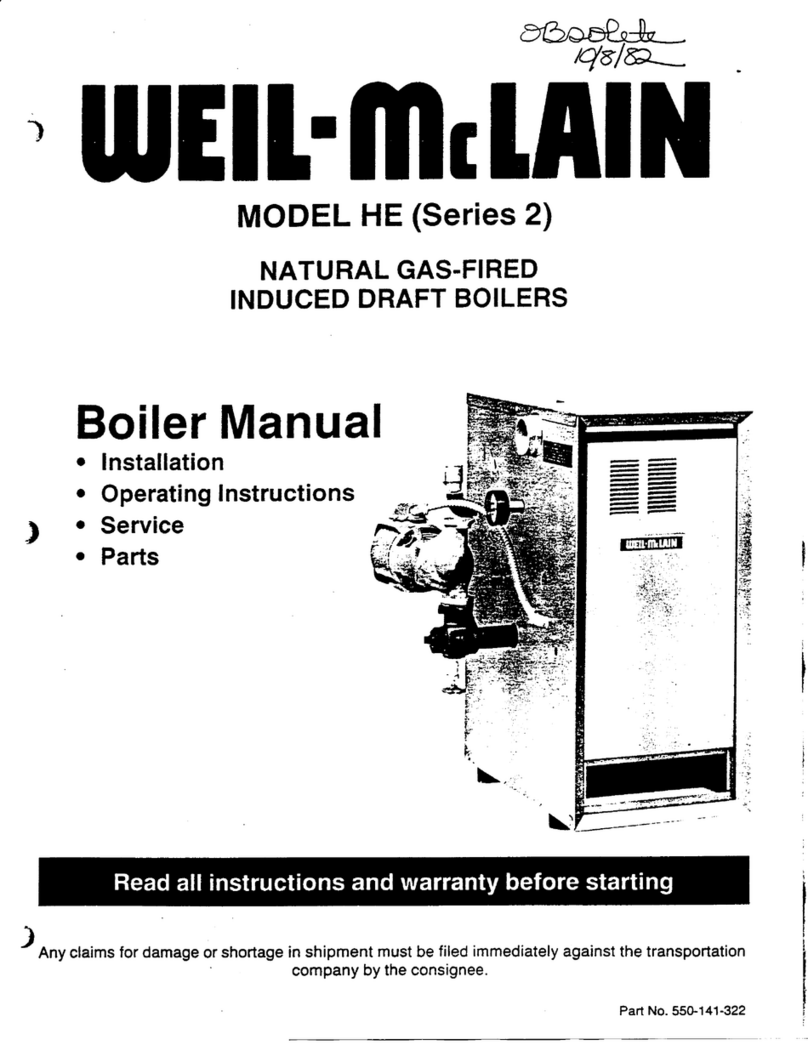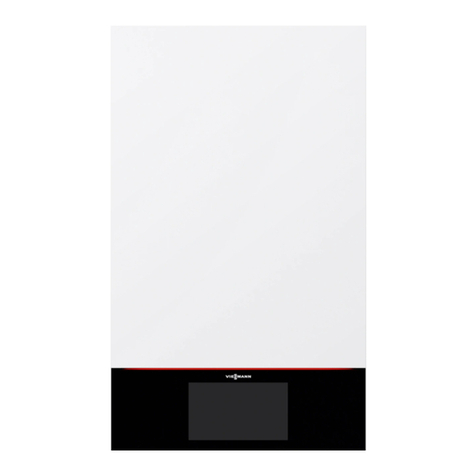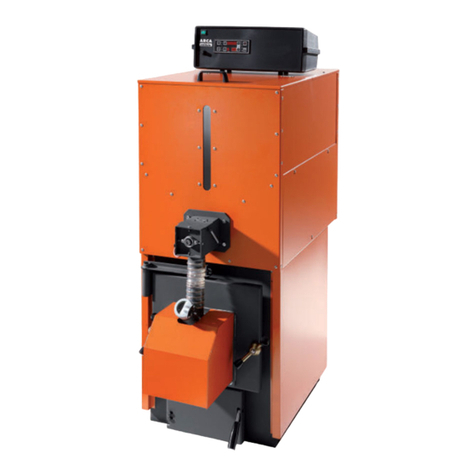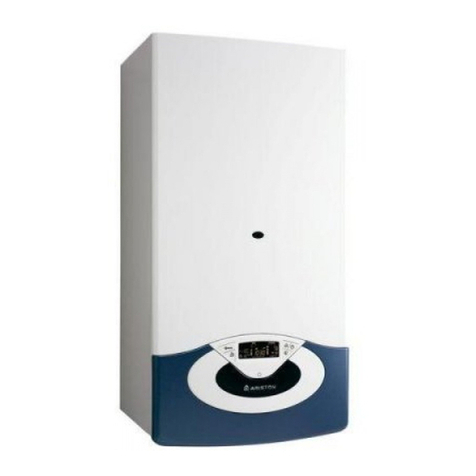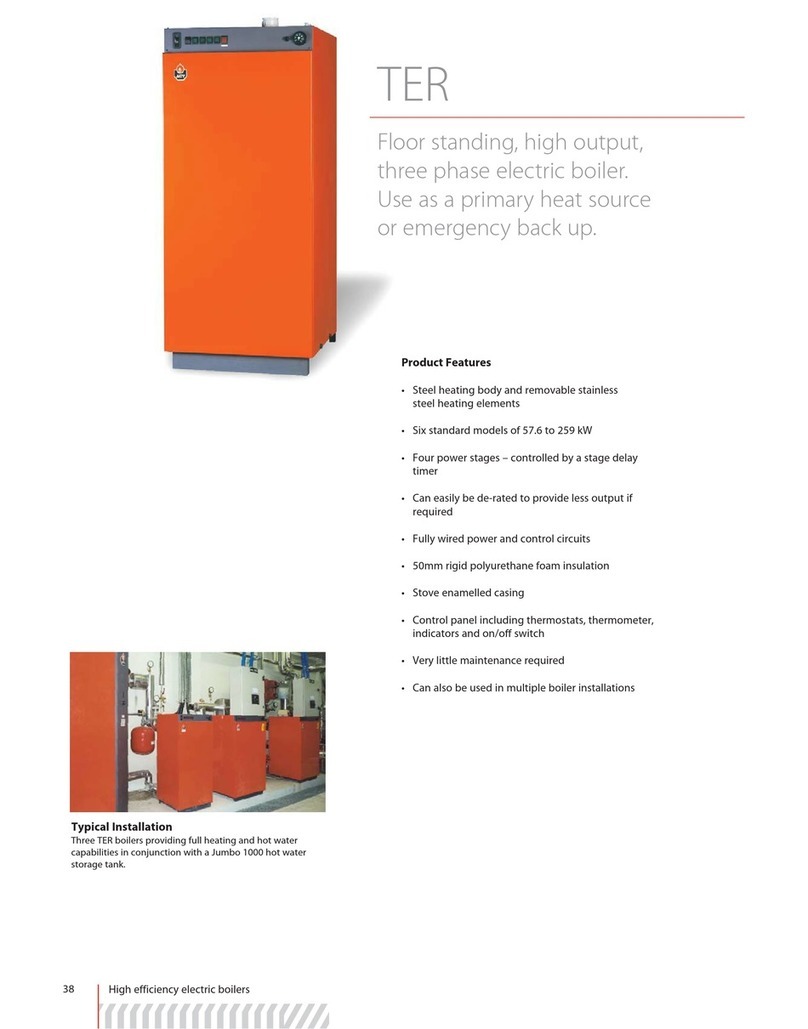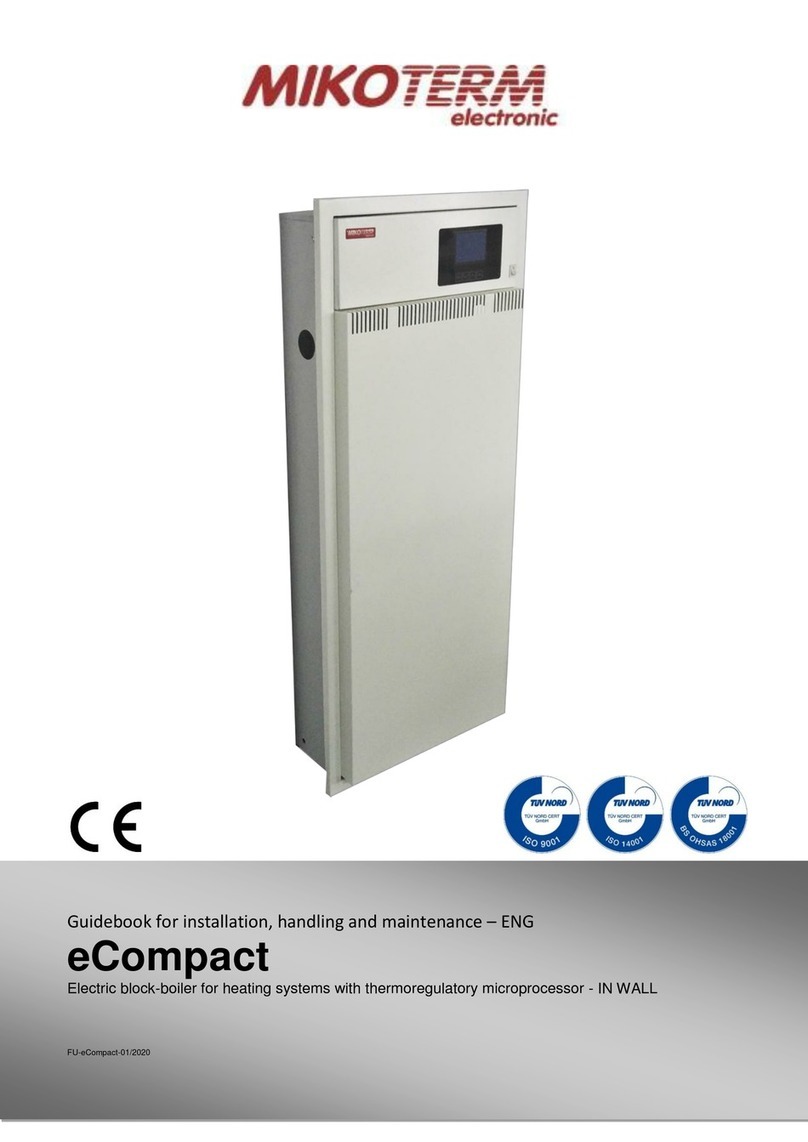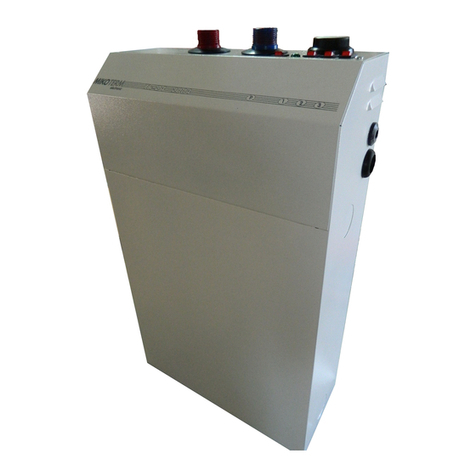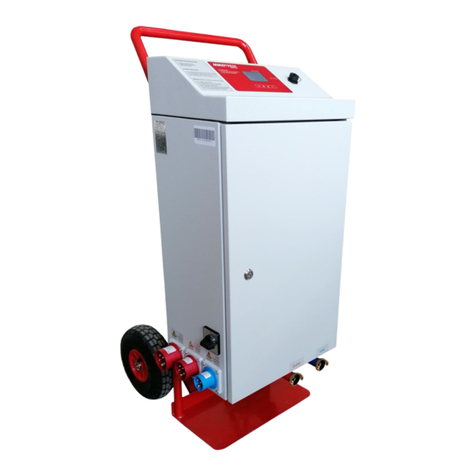4.5Hydraulic attachments execution
NOTE: Material damages caused by permeable
connections!
Attachment duct lines install without connecting
on TK-ELG connections.
NOTE: Installation damage due to bad quality of
water! Heating installation can be damaged by
corrosion or scale depending on water
characteristics.
Comply with filling requests for water according
to VDI 2035 or project documentation and
catalogue.
Heating duct lines connect as follows:
Connect return line on connection 1(image 2).
Connect start line on connection 4(image 2).
4.5.1 Filling the TK-eLG with heating
water and sealing test
Impermeability should be tested prior to put on the
boiler.
DANGER: Injuries and/or material damages can
occur with overpressure when testing watertight!
High pressure can damage regulatory and
safety devices and reservoir.
After filling with water set the TK-ELG on
pressure that is equal to the opening pressure
of safety valve.
Comply with maximum pressure of installed
components.
After testing sealing, open again closing
valves.
Make sure that all pressures, regulatory and
safety parts work correctly
DANGER: Health threat due to mix of drinking
water!
It is demanding to respect state norms and
regulations on avoiding mix drinking water
(with water from heating installations).
Comply with EN 1717.
NOTE: Material damage due to temperature
tension.
If you fill the TK-ELG in hot condition,
temperature tension can cause cracks due to
tensions. TK-ELG will start to leak
Fill the TK-ELG only in cold condition
(temperature of empty duct can be max 40°C)
Fill the TK-ELG only through quick valve on
pipe installation (return line) of the TK-ELG
Connect the filling hose to the water supply network
and slowly fill it with water so that all the air comes out of it
and the water starts to flow continuously.
Close the tap on the water supply network and
connect the free end of the hose to the tap for filling and
emptying the heating installation. Secure the hose with a
clamp.
Open the installation filling and draining tap and
slowly charge the TK-ELG. Monitor the pressure rise and
close the tap when the operating pressure is reached.
Bleed the installation via the valve on the radiator.
If the operating pressure drops by venting, the water
must be topped up.
Test for leaks according to local regulations.
After you have tested the tightness, open all the
elements that you closed due to filling.
Check that all safety elements are working properly.
If the TK-ELG is tested for leaks and no leakage is
observed, set the required operating pressure, according to
the pre-pressure of the expansion vessel.
Remove the hose from the filling and emptying tap.
Enter the operating pressure and water quality
values in the operating instructions.
4.5.2 Heating pump air emission and de-
blocking
This device does not have a circulation pump in it.
When the external pump is blocked, do the following:
Unscrew the center screw in the middle of the "head"
of the pump
Carefully try to unlock the pump shaft with a suitable
screwdriver.
4.5.3 TK-ELG venting and installation
This device does not have a built-in vent, because
the construction of the TK-ELG vessel is such that air
cannot remain trapped in the boiler but exits the TK-ELG
through the pressure pipe.
Ventilation must be installed on the installation, so as
to ensure venting of the air that can come out of the
pressure pipe, as well as venting of the entire installation.




















